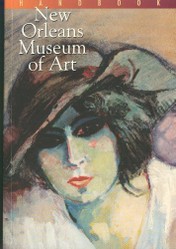New Orleans once had a mint that produced gold and silver coins for the United States. Generally, the United States has located branch mints near mines that produced the gold and silver, but there are no gold or silver mines in the area. However, it was located very close to the Mississippi River, where gold and silver could easily be shipped to the New Orleans Mint.
The New Orleans Mint produced coins for the United States, then in the Civil War was taken over by the State of Louisiana and continued minting. When Louisiana joined the Confederate States of America shortly thereafter the New Orleans Mint produced coins for the new government. New Orleans was captured early in the Civil War, and occupied by General Butler. This ended the New Orleans Mint’s production of coins for the Confederate States of America. Eventually, the New Orleans Mint began minting coins for the United States again.
Today, the New Orleans Mint is owned by the State of Louisiana, and houses an exhibit on the first floor that has some of the original minting machinery, a collection of coins minted by the New Orleans Mint, a press used for Mardi Gras doubloons, and a die for a Confederate half dollar. This part I have entered several times at no charge. Upstairs the mint often has exhibits, and I have no idea whether they have an admission fee to go up to those exhibits.







 Christmas on Zazzleon 10/21/2025
Christmas on Zazzleon 10/21/2025
 The Linear Equation and Related Equations and Inequalitieson 08/15/2024
The Linear Equation and Related Equations and Inequalitieson 08/15/2024
 Understanding Calculus: A Simplified Approach to Derivativeson 08/05/2024
Understanding Calculus: A Simplified Approach to Derivativeson 08/05/2024
 Limits: Vital Building Blocks of Calculuson 08/01/2024
Limits: Vital Building Blocks of Calculuson 08/01/2024



Comments
The D-Day Museum is the newest, but has been around for several years now.
I would love to see that D Day museum, and also the Mardi Gras one. I am almost ashamed to admit that I lived in NOLA for a year, and never visited any of the sites you have chronicled here. What a shame! But, it does give me an excuse to go back and spend some time there some day.
The D-Day museum is unique, developed by historian Steven Ambrose with a grant. And it continues to grow. The art museum is worth a visit, but it is so large I would recommend getting there early enough to go through it, especially of there is also a visiting exhibit, as there often is. I believe the visiting exhibits are absent while they are being changed out. It seems there is always something new being advertised. It also has a sculpture garden associated with it.
this is very interesting . Ty for posting. The art and D Day museums look especially interesting to me.
They are all worth the visit.
The D-Day museum is more recent than 35 years ago.
I'm putting the museum on my must see list next time I'm in New Orleans.
It's been 35 years since I visited New Orleans. I would have liked to see the D-Day Museum. Thanks for an interesting article.